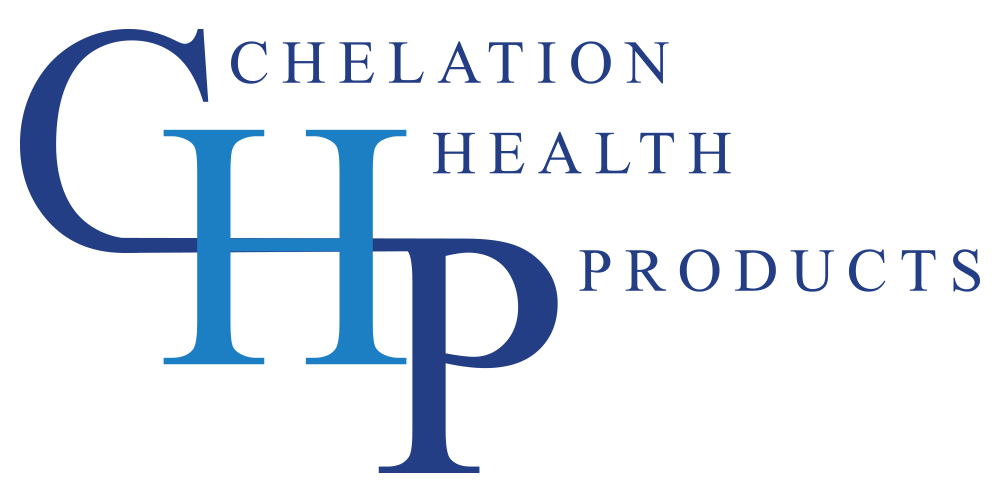Chelation Therapy
Studies do show that EDTA Chelation is safe and effective
If you call the American Medical Association or ask your Doctor if Chelation Therapy can help with high blood pressure, unclog arteries, relieve Hypertension, improve Heart Disease or any number of health issues caused by toxic heavy metals chances are they will report that no studies have been done to document effectiveness of this treatment. In fact, studies proving effectiveness of EDTA in removing calcium deposits from tissues, reducing chest pain in heart patients and a myriad of other benefits date back to the 1960s
Unfortunately, after Doctors started utilizing EDTA Chelation Therapy excessive doses of EDTA were used and adverse reactions including a few deaths were reported. But no nutritional support was given at that time and treatments were often times given five or six days per week, 2-3 more often than has been recommended for a couple of decades. Due to a few reports of poor results with EDTA Chelation the interest in the treatment decreased for a time however, because of the dramatic improvement in so many patients, doctors continued to give EDTA Chelation Therapy.
H. Richard Casdorph, M.D., PhD. Published two articles in 1981. The first one documented an increase in left heart function immediately after a Chelation treatment using a radionuclide scan. The second study, again using a nuclear scan for measurements, revealed a highly significant increase in blood flow to the brain in a group of 15 patients after an average of 20 Chelation treatments. All 15 patients also had improvement in their symptoms.
A study done in 1982 by Drs. McDonagh, Rudolph and Cheraskin showed a definite increase in blood flow to the brain using measurements of blood flow to the eyes. This study helps us to understand why Chelation Therapy often improves vision. These authors did two more studies in 1985 and 1986 showing improvement in kidney function using EDTA Chelation Therapy. This is contrary to the often-repeated claim by opponents of EDTA Chelation Therapy, that EDTA is dangerous to the kidneys. As long as the treatment is given slowly and in the recommended dosage even patients with moderate kidney dysfunction can be helped.They published another study in 1985 on 77 elderly patients with documented occlusive vascular disease of the lower extremities. After 60 days of treatment, Doppler Ultrasound blood pressure measurements revealed a highly significant improvement in blood flow to the feet.
Now with EDTA Chelation Suppositories the burden on the kidneys is far less since the EDTA is filtered out over a longer period time
Drs. Casdorph and Farr published a report in 1983 of four patients with gangrene of the lower extremities who were treated with EDTA Chelation Therapy, nutritional supplements and hyperbaric oxygen. All four patients had been told to undergo amputations by other doctors but instead sought an alternative and ended up undergoing EDTA Chelation. All four patients were successful in avoiding amputation and follow up more than a year later revealed all patients to be doing well and free of pain in their legs.
Studies by Dr. Van der Schaar in Holland and Dr. Kindness here in the U.S. were reported at the third International Chelation Conference at Georgetown University in Washington D.C. in July 1989. Both studies revealed that EDTA infusion changes the “stickiness” of clotting factors in the blood known as platelets. This then results in a decrease in clot formation. Clot formation is thought to be the mechanism of various inflammatory disorders as well as heart attacks and strokes. Dr. Van der Schaar was a busy cardiovascular surgeon until 1985 when he began to experiment with Chelation Therapy. He has used EDTA Chelation Therapy on thousands of patients and only rarely does bypass surgery anymore.
Brazilian doctor, G.P. Deucher, published an article in 1987 documenting increased discharge of heavy metals such as iron in the urine after infusion of EDTA This finding correlated with asizable decrease in cardiovascular issues
In 1989, Efrain Olszewer, M.D. and James P. Carter, M.D., DrPh published a retrospective study of 2,870 patients who had undergone Chelation Therapy in Brazil.Patient response was evaluated by Doppler blood flow studies, EEG, motor and sensory tests, cognitive evaluation and memory tests. Overall, 68.8% of the patients had a “marked improvement”, while 20.4% had a “good improvement” as defined in the study. This represented an overall improvement of 91.2%. patients with heart or peripheral vessel disease fared better than those with carotid or cerebro-vascular obstruction.
Drs. Rudolph and McDonagh treated 31 patients with Chelation Therapy for arteriosclerosis of the carotid arteries and published their results in 1991. Evaluation of the degree of obstruction in the subjects’ carotid vessels was performed before and after 30 infusions of EDTA using a Doppler ultrasound scanner. Overall intra-arterial obstruction decreased an average of 21%. They also treated a man with severe hypertension with a blockage to his left renal (kidney) artery. The patient underwent Chelation Therapy as an alternative to surgery. After 70 treatments there was a dramatic reduction of obstruction in the artery from 60-70% down to about 20% and his blood pressure normalized.
A study of 470 patients in Denmark was published in 1993 by Drs. C. Hancke and K. Flytlie. In this study 80% to 91% improvement was documented depending on the measurement used. Of special interest: 92 of these patients had been initially referred for surgery (27 for leg amputations and 65 for coronary bypass) but after undergoing Chelation Therapy only 10 of this group had to undergo surgery. (Only 3 had amputations and 7 went to bypass surgery.) This saved 24 legs, 58 open-chest surgeries and $3,000,000 of insurance money in Denmark.
In 1994, Drs. Rudolph, Samuels, and McDonagh reported a dramatic improvement in a 59-year-old woman’s visual fields after 30 Chelation treatments. This patient had been diagnosed with Map-Dot-Fingerprint dystrophy, a form of macular degeneration. Concomitantly her visual acuity was restored to normal after the treatments and 1-year follow-up revealed no relapse.
Even studies that purport to prove that Chelation Therapy isn’t effective, when carefully analyzed, reveal the efficacy of EDTA The study of Van Rij showed that 60% of patients with very severe peripheral vascular disease in fact improved after 20 infusions of EDTA And, in this study, the EDTA group was compared to a “placebo” group that in fact received thiamine, vitamin C and magnesium.
Dr. H.J. Holliday, a vascular surgeon, published a case study in 1996 of a patient with recurrent carotid stenosis after an endarterectomy operation that he then chelated with EDTA This patient presented with an 80-85% stenosis of the right internal carotid artery and underwent an operation to remove the plaque. However, 2 years later the obstruction recurred to 65-70% and in 6 more months it had progressed to 70-75% again. The patient elected to undergo chelation therapy instead of another operation and after 20 chelation treatments the stenosis was reduced to 60-65% with a concomitant decrease in peak velocities with Doppler indicating an improvement in the hemodynamics at the site of obstruction. Dr. Holliday concluded that “EDTA chelation provides an exciting approach … that reduces the degree of blockage”.
Dr. Majid Ali and his associates published a study in which 26 consecutive patients with ischemic heart disease who had failed to respond to various combinations of by-pass surgery, angioplasty and multiple drug therapies were treated with 20 or more infusions of EDTA Some of these patients were assessed with Thallium Myocardial Perfusion Scans before and after their treatments. Of the 6 patients who underwent these scans 5 showed definite improvement in myocardial perfusion (more blood flowing to the heart muscle in areas previously lacking such flow). Overall clinical improvement as judged by relief of symptoms was as follows: 61% excellent, 17% good, 13% moderate and 9% poor. This is obviously far better results than can be expected from a placebo effect and there was no mortality during the course of the study.
The question is always raised by patients and doctors alike: will Chelation Therapy unblock obstructed arteries? While there is no definitive proof at this time that is acceptable to the FDA, there are studies, which are highly suggestive that Chelation can do this. Drs. Rudolph and McDonagh treated a man with severe hypertension with a blockage to his left renal (kidney) artery. The patient underwent Chelation Therapy as an alternative to surgery. After 70 treatments there was a dramatic reduction of obstruction in the artery from 60-70% down to about 20% and his blood pressure normalized.
These are only a few of the hundreds of studies that have been done on EDTA Chelation Therapy. To me there is absolutely no doubt that EDTA Chelation Therapy is highly effective at removing toxic heavy metals including Mercury, Lead, Aluminum and Arsenic which helps to improve diseases and health issues from high blood pressure, artheriosclerosis, hypertension, Alzheimers and much more.
EDTA Chelation suppositories are even more effective than I.V. EDTA transfusions as the EDTA will stay in your body up to 4 times longer giving the EDTA a much better chance at Chelating. Plus they are far less expensive and safer! KelaminHM EDTA suppositories are the most effective and cost efficient EDTA Chelation product on the market today!

